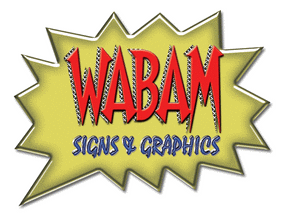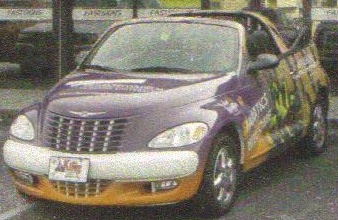|
|
|
| WABAM FAQ | |
|
Below are a few FAQ's about vehicle graphics & wraps...
|
|||||||||||||

|
Auto Wraps Buyer's GuideBillboards that sit atop buildings or on the side of highways can be an effective form of advertising, but only reach a people in a single location. By purchasing an auto wrap for a car, van, or truck, you can expand your visibility to more customers for a fraction of the cost.An auto wrap is essentially a moving billboard that puts your message directly in front of potential customers. Whether your wrapped vehicle is stuck in traffic or traveling from state to state, your logo and contact information is seen by different audiences every day. Types of auto wraps
Depending on the size of the vehicle and complexity of the auto wrap, we can print and install a wrap in 3 to 5 days. |
||||||||||||
Why auto wraps?
Second, by displaying your company's information on an auto wrap, you get a campaign that can last for years, far longer than a stationary billboard, classified ad, or radio spot. Depending on whether you want to advertise just company information or specific offers, you can get long-term wraps that last for 5 to 7 years, or a short-term wrap that lasts for 1 year. Finally, you can also reach potential customers that may not see ads in newspapers, on radio or TV, or through the Internet. While they can turn away those mediums, it's more difficult to ignore ads placed directly in front of them during their daily commute. |

|
||||||||||||
|
|
Auto wraps pros and cons
|
||||||||||||
Creating auto wraps
Want to see how the auto wrapping process works? Watch this video clip to learn more about the benefits of wraps, how they are created, and the application process.
|
|||||||||||||
| Auto wraps pricing
Half wraps and partial wraps (for windows only) run from a few hundred dollars to a few thousand dollars – the less complex the installation, the deeper the discount. If you need auto wraps for several vehicles, many dealers offer discounted fleet pricing based on the number of vehicles. In addition to a price break, using the same dealer for a fleet of vehicles helps keep your design constant. Other factors that can add to your costs include design work, proofs printed on the actual material, post-proof edits, premium lamination, and rush delivery. |
|||||||||||||
| |
|
||||||||||||
|
|
|
||||||||||||
| |
|
||||||||||||
|
|
|
||||||||||||
|
|
|
||||||||||||